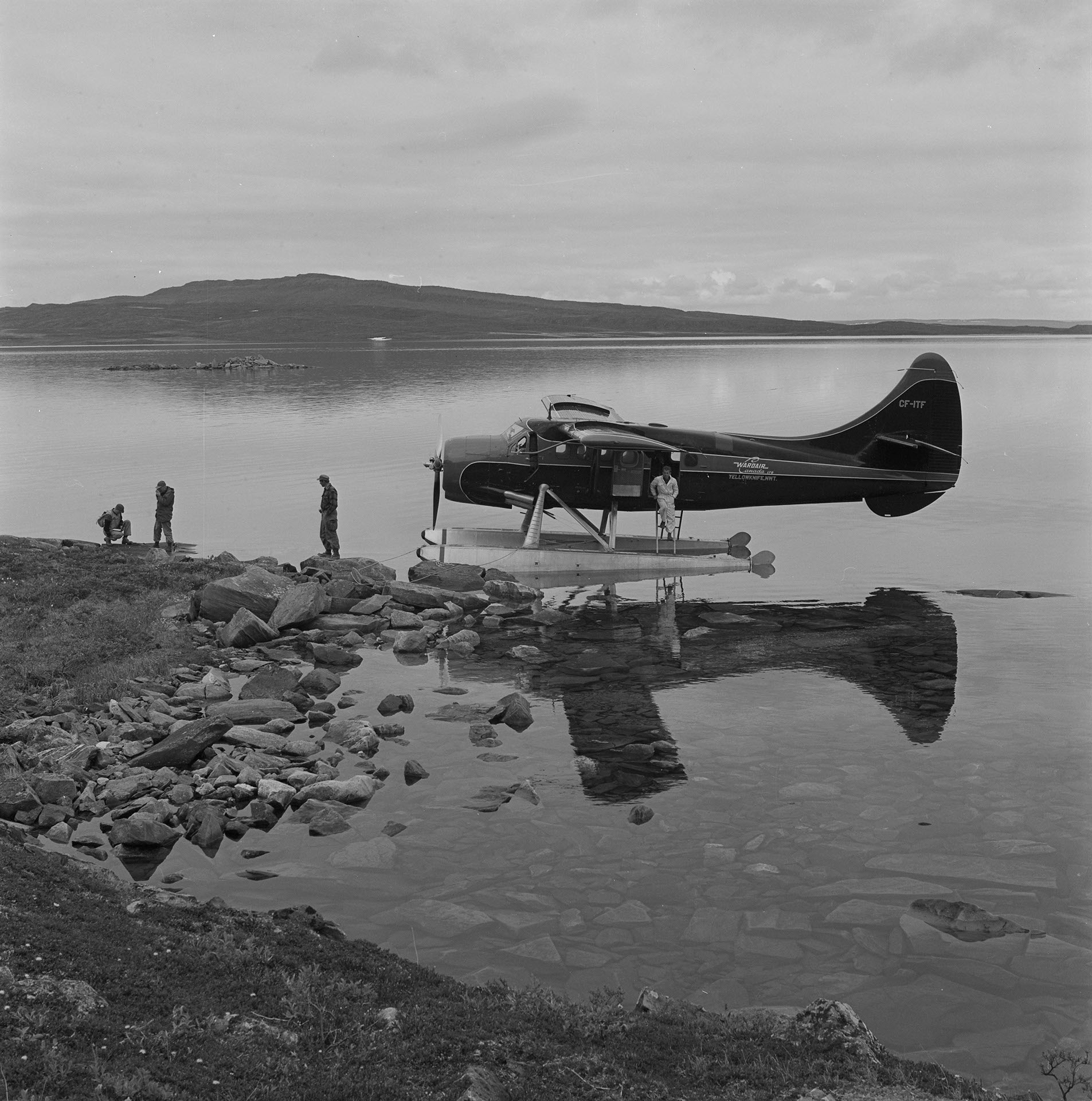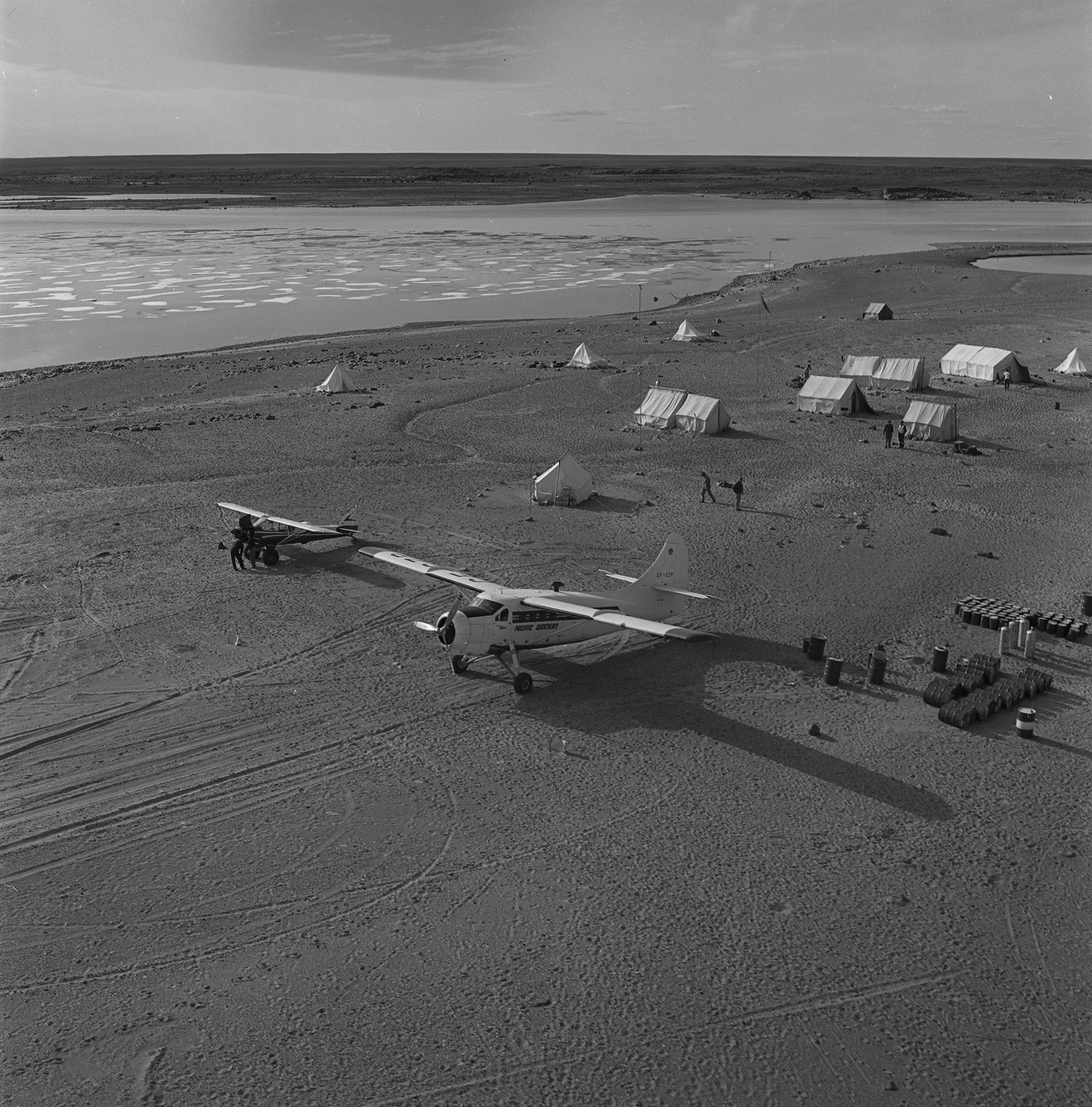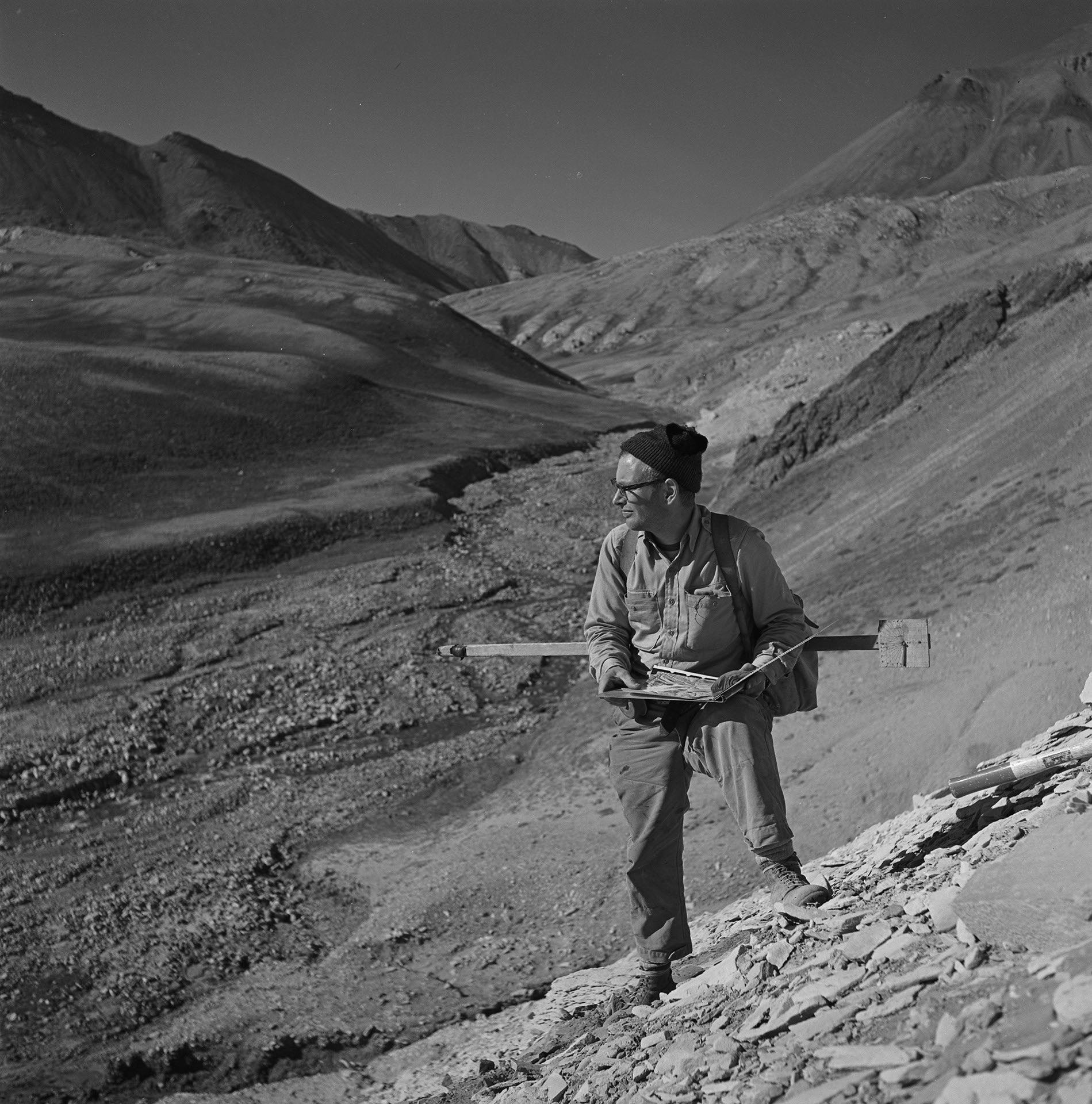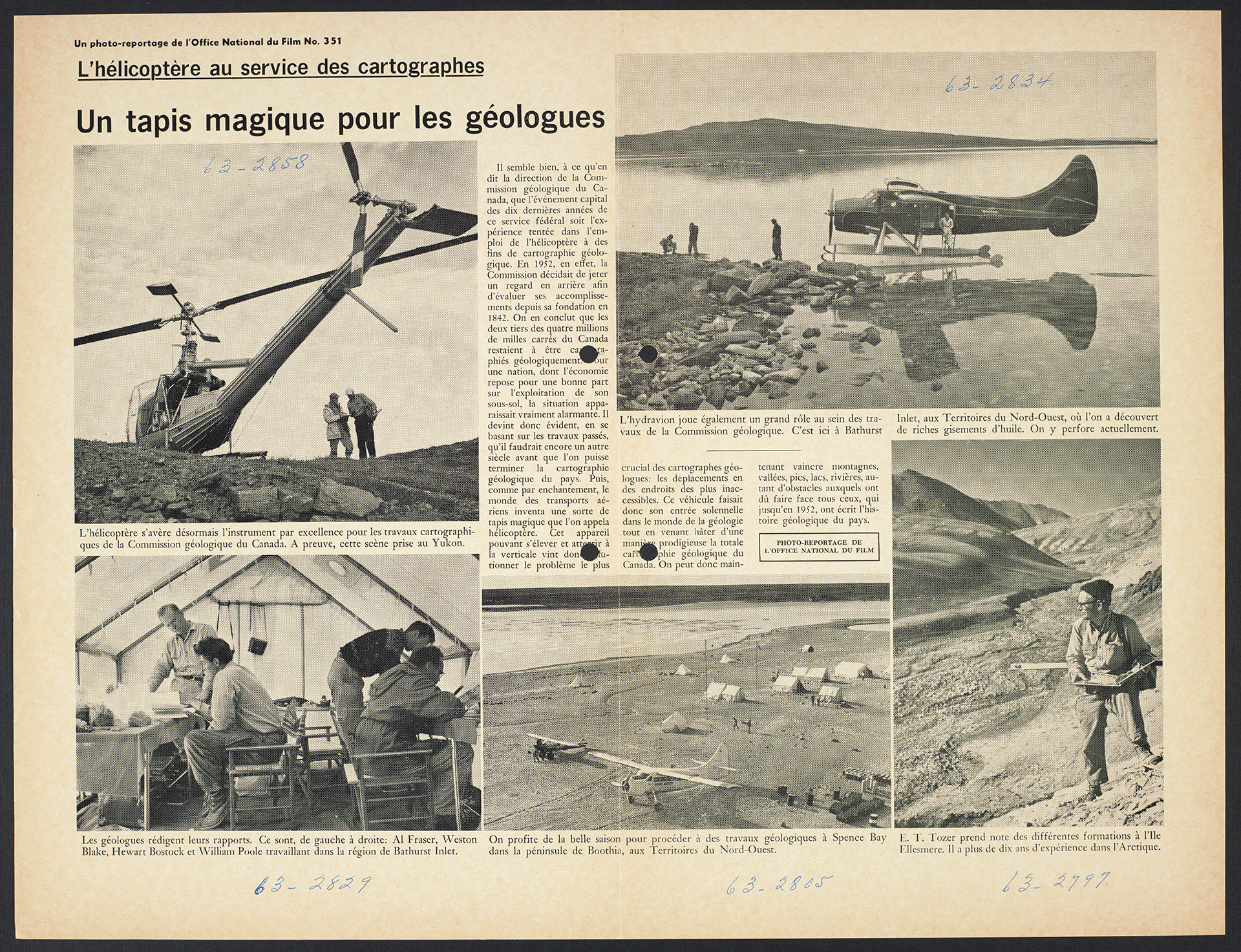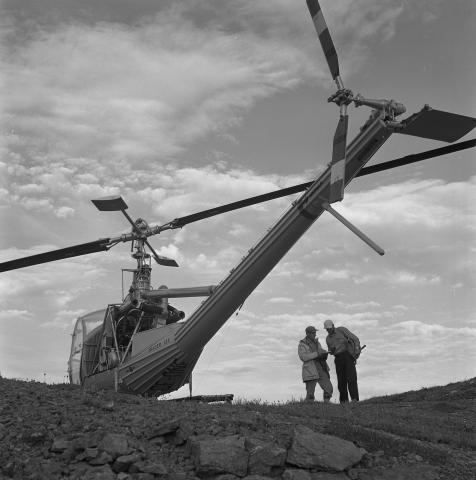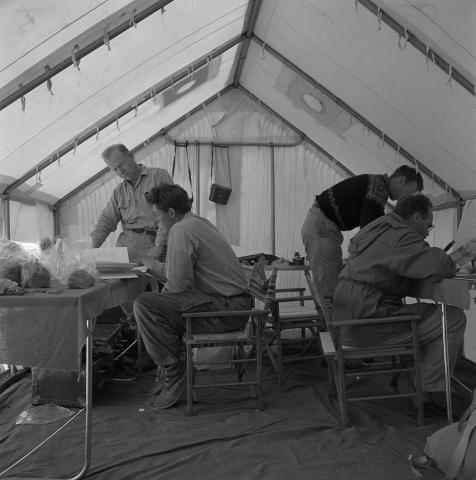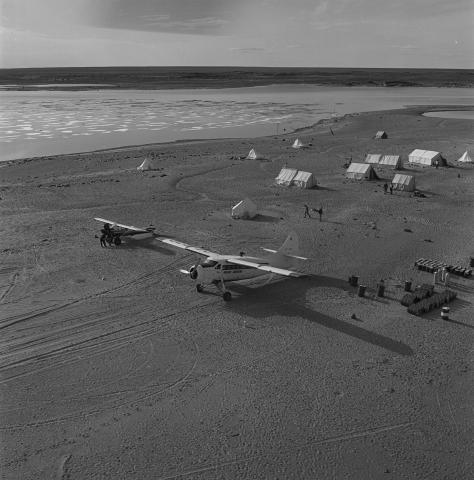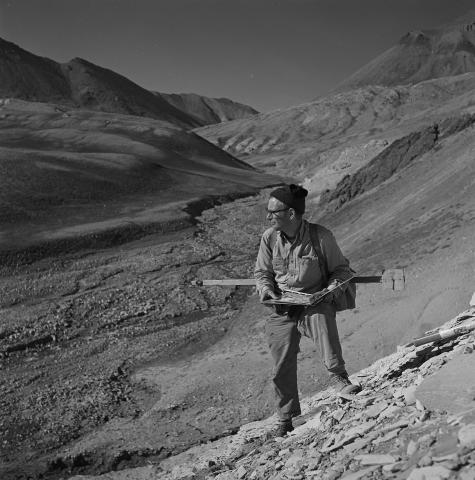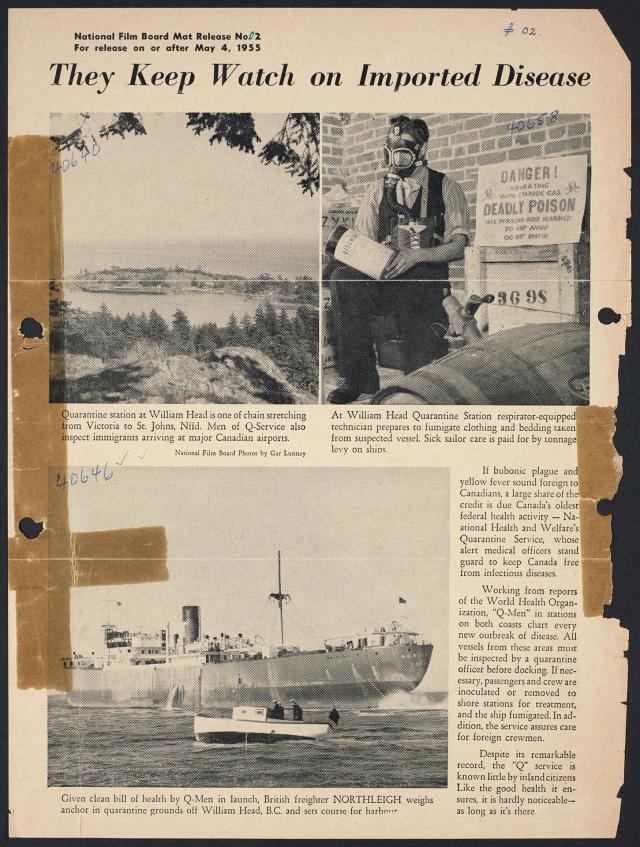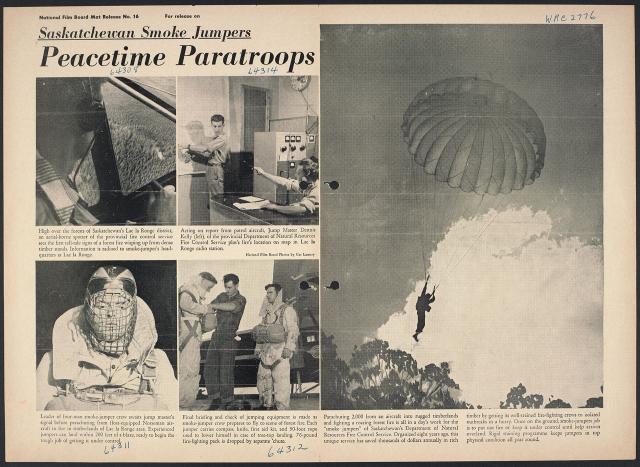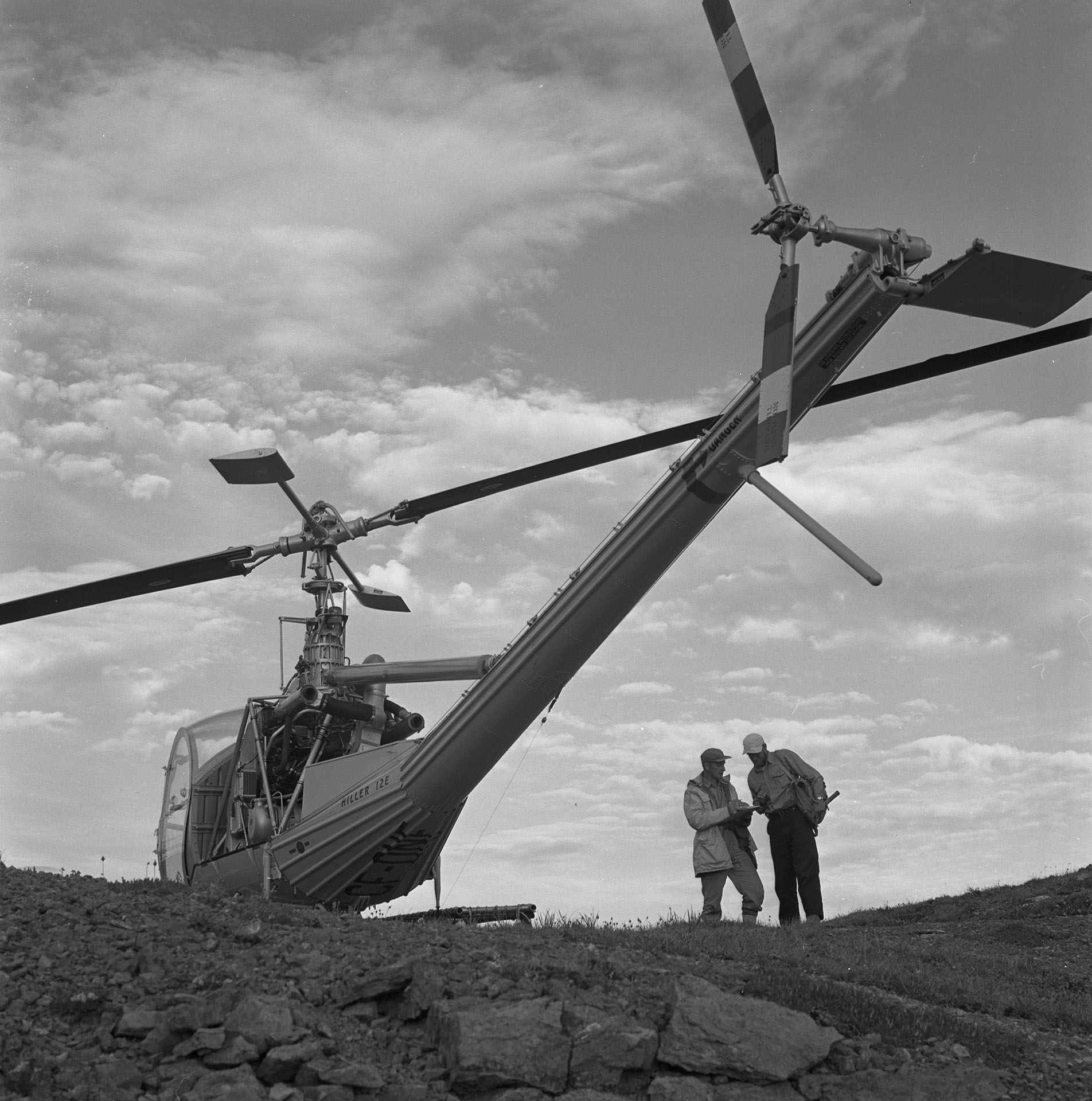
Photostory #351: Flying Footsloggers Range Far and Wide: Canada's Geological Airborne Campaign
Photographers
Maker
National Film Board of Canada
Release Date
November 19, 1963
Collection
CMCP fonds
Credit Line
Canadian Museum of Contemporary Photography fonds, National Gallery of Canada Library and Archives
Main Text
Just over a decade ago Canada's top geologists sat down to review progress over the past 110 years. They found, despite rugged efforts by generations of tough, hard-bitten predecessors (the Geological Survey of Canada has operated since 1842) more than two-thirds of Canada's sprawling 4,000,000 sq. miles were still unmapped geologically. For a nation so dependent on mineral wealth it was a vital situation. At this rate, another century and a half was needed to finish even a preliminary survey of the country. It was then the helicopter came clattering with whirling blades into the geological picture, to provide a far-seeing observation platform. Combined in operations with fixed-wing airplanes, the helicopter became a magic carpet from which the skilled scientific eyes of experienced geologists could range over mountains and valleys, lakes and barrens. Today, the Geological Survey of Canada launches nearly a dozen simultaneous airborne operations a year. Helicopters, float-planes and balloon-tired aircraft carry geologists on scientific surveys that would have taken scores of years by previous pack-horse, canoe and dog-sled methods. Yet, though this airborne assault is expected to complete the reconnaissance mapping of Canada by 1970, there is still lots of old-fashioned foot-slogging to be done. In fact, during a single field season, some airborne party members may walk more than 500 miles and climb enough mountainsides to total five times the height of Mount Everest.
Subjects:
Locations:

